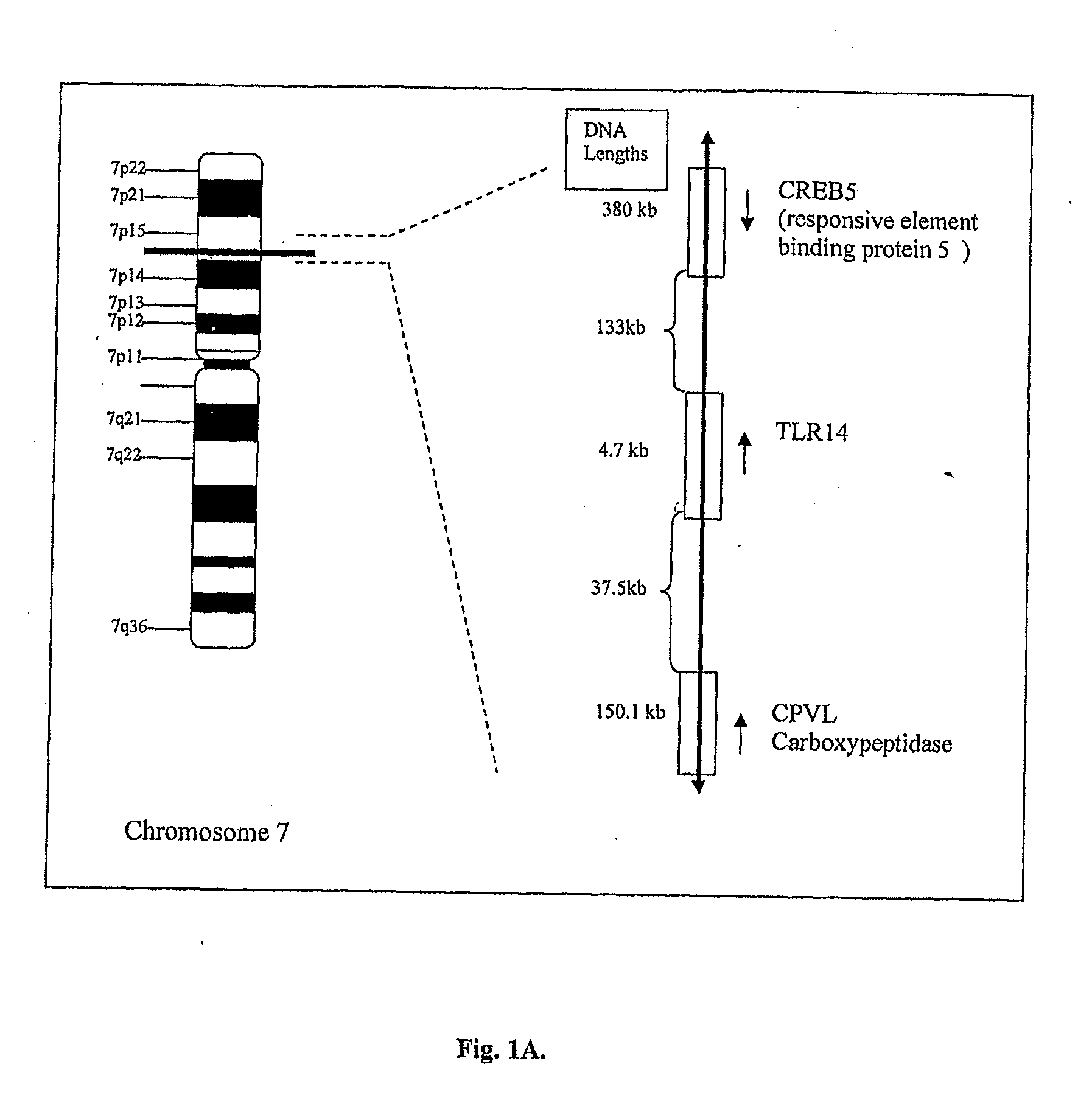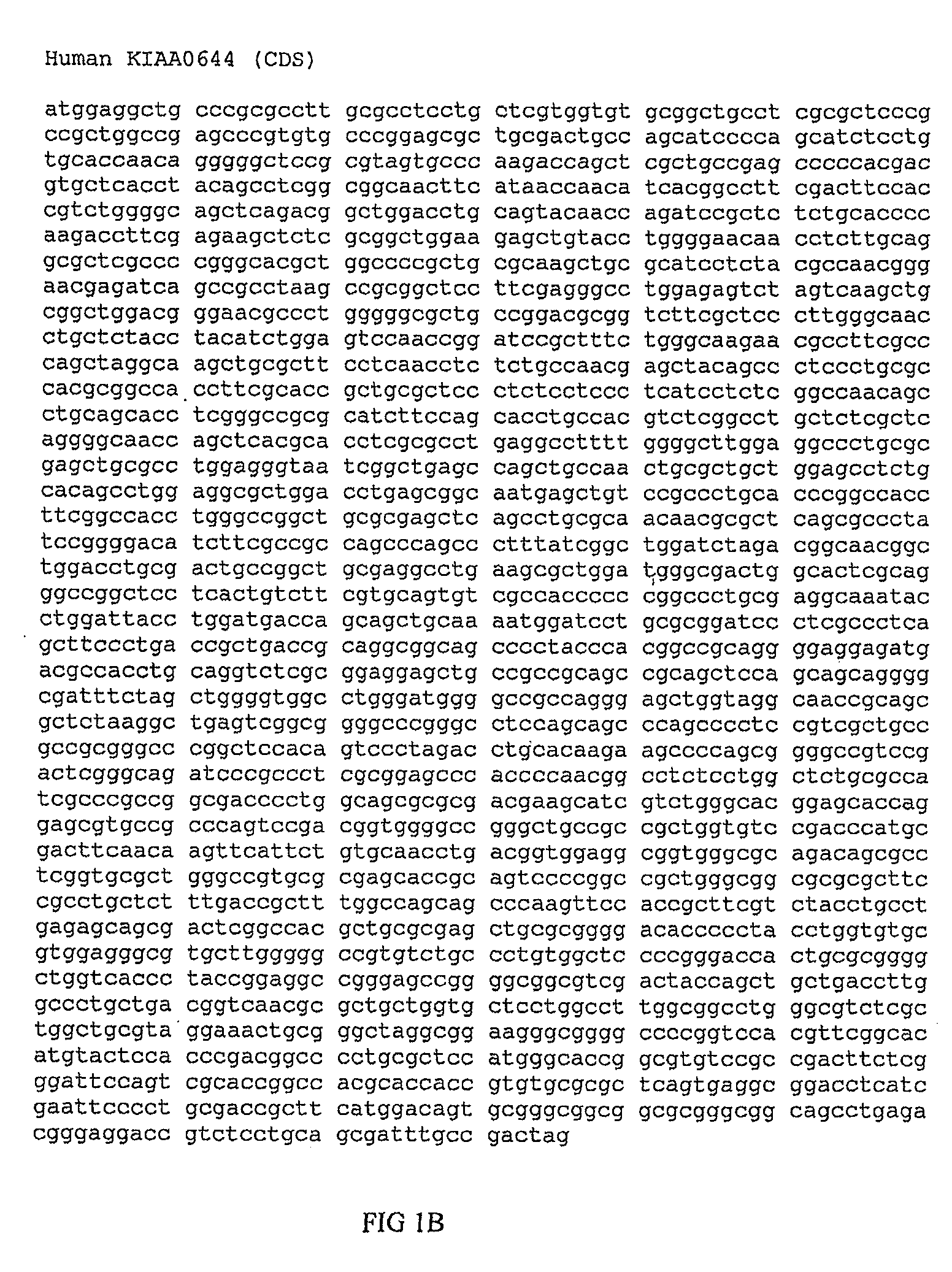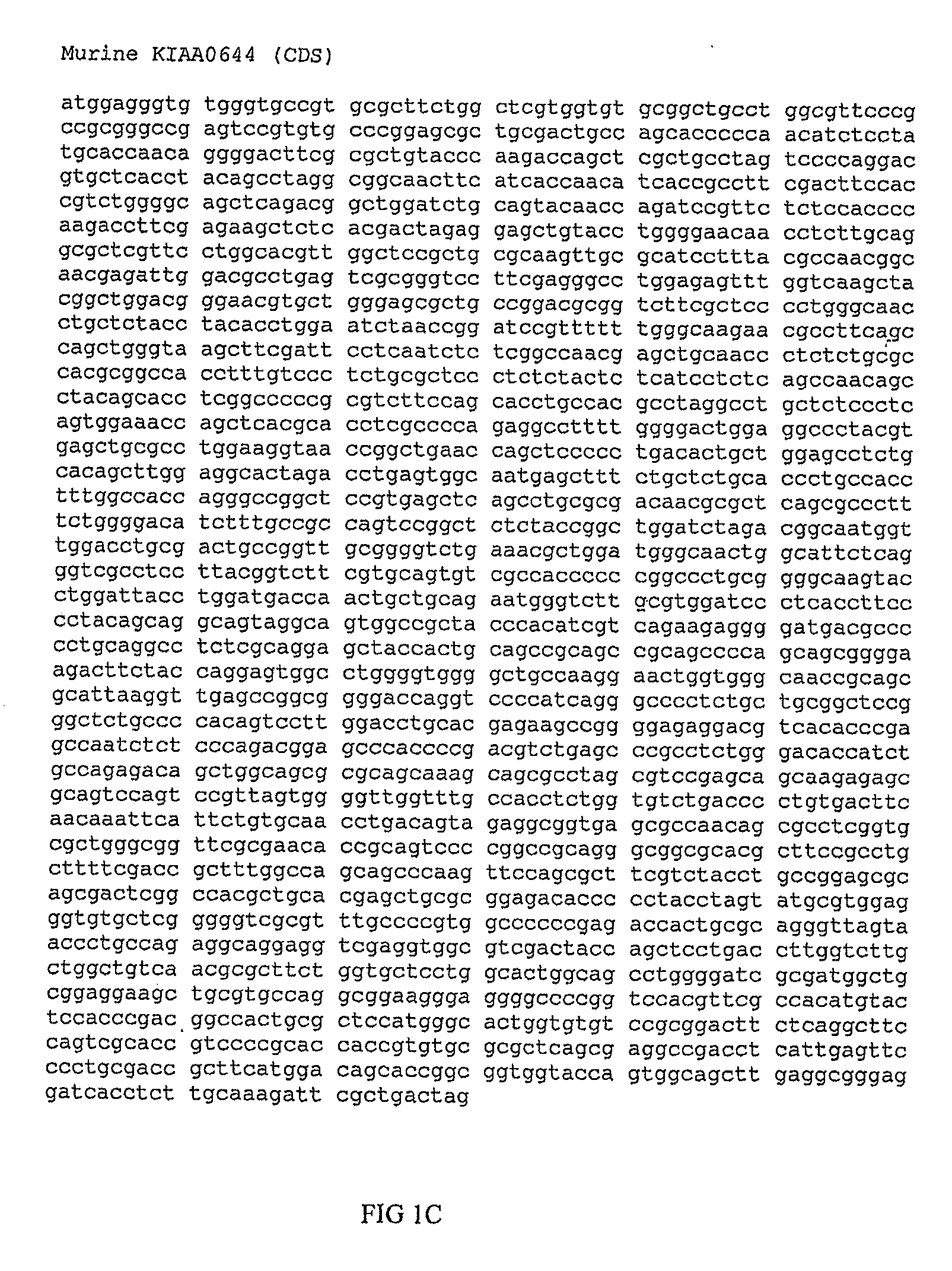Polypeptides and use thereof
a polypeptide and polypeptide technology, applied in the field of polypeptides, can solve the problems of multi-organ failure, cardiovascular collapse, and eventually death, and achieve the effects of reducing the severity or onset of a particular condition, reducing the risk of developing a particular condition, and improving the symptoms
- Summary
- Abstract
- Description
- Claims
- Application Information
AI Technical Summary
Benefits of technology
Problems solved by technology
Method used
Image
Examples
Embodiment Construction
We have identified a novel gene that shows remarkable homology with members of the Toll-like receptor / Interleukin-1 receptor (TLR) family. In cell-based assays, this novel receptor activates the transcription factors NF-κB and IRF3 and drives the production of the anti-viral cytokine, RANTES. The protein interacts with the TLR2, TLR4 and the universal TLR adapter, MyD88. We have named the receptor TLR14.
Expression of this putative receptor is enhanced by microbial products, for example LPS, suggesting that it may function as an immuno-modulator. In support of this, the transcription factors NF-κB and IRF3 were activated when cells were transfected with a vector expressing TLR14. As both NF-κB and IRF3 are central in the elimination of bacterial and viral pathogens, inhibiting or activating TLR14 is a promising new approach for the treatment of inflammatory diseases. In addition, we have found high levels of TLR14 in serum. A soluble form of TLR2 comprising mainly of the ectodomain o...
PUM
| Property | Measurement | Unit |
|---|---|---|
| molecular weight | aaaaa | aaaaa |
| total volume | aaaaa | aaaaa |
| temperatures | aaaaa | aaaaa |
Abstract
Description
Claims
Application Information
 Login to View More
Login to View More - R&D
- Intellectual Property
- Life Sciences
- Materials
- Tech Scout
- Unparalleled Data Quality
- Higher Quality Content
- 60% Fewer Hallucinations
Browse by: Latest US Patents, China's latest patents, Technical Efficacy Thesaurus, Application Domain, Technology Topic, Popular Technical Reports.
© 2025 PatSnap. All rights reserved.Legal|Privacy policy|Modern Slavery Act Transparency Statement|Sitemap|About US| Contact US: help@patsnap.com



